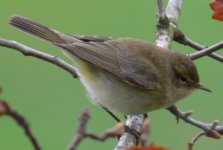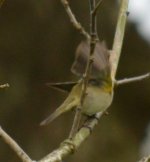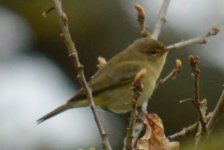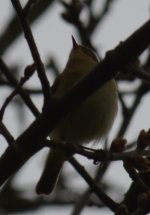Hello,
Could anyone help me ID this?
From the Malvern Hills today.
It was in a small tree at edge of playing field next to a wood.
Still learning about warblers....I read the beginners guide post.
Of the common ones, the only ones that seem possible are willow, garden or chiffchaff.
It was making a monotonous short sound, different to the garden warbler sounds I find online, closer to the "call" section of the willow warbler I can hear on www.british-birdsongs.uk. But no strong white supercilium here so does this mean not a chiffchaff or willow warbler?
Many thanks!
Could anyone help me ID this?
From the Malvern Hills today.
It was in a small tree at edge of playing field next to a wood.
Still learning about warblers....I read the beginners guide post.
Of the common ones, the only ones that seem possible are willow, garden or chiffchaff.
It was making a monotonous short sound, different to the garden warbler sounds I find online, closer to the "call" section of the willow warbler I can hear on www.british-birdsongs.uk. But no strong white supercilium here so does this mean not a chiffchaff or willow warbler?
Many thanks!
Attachments
Last edited:








